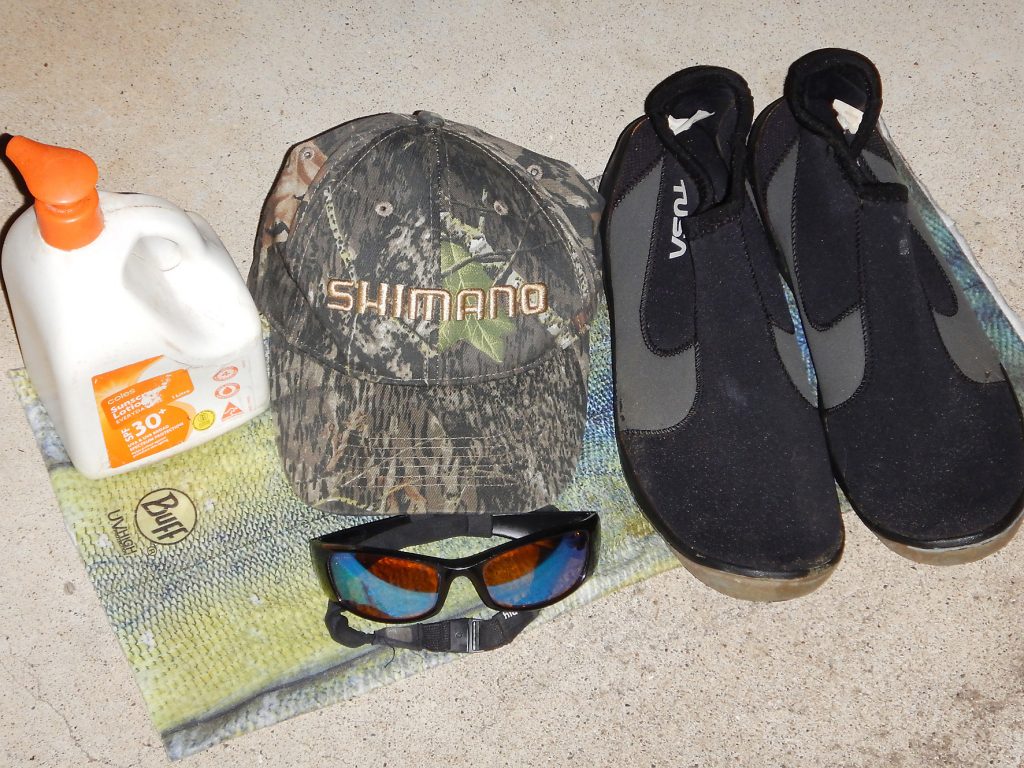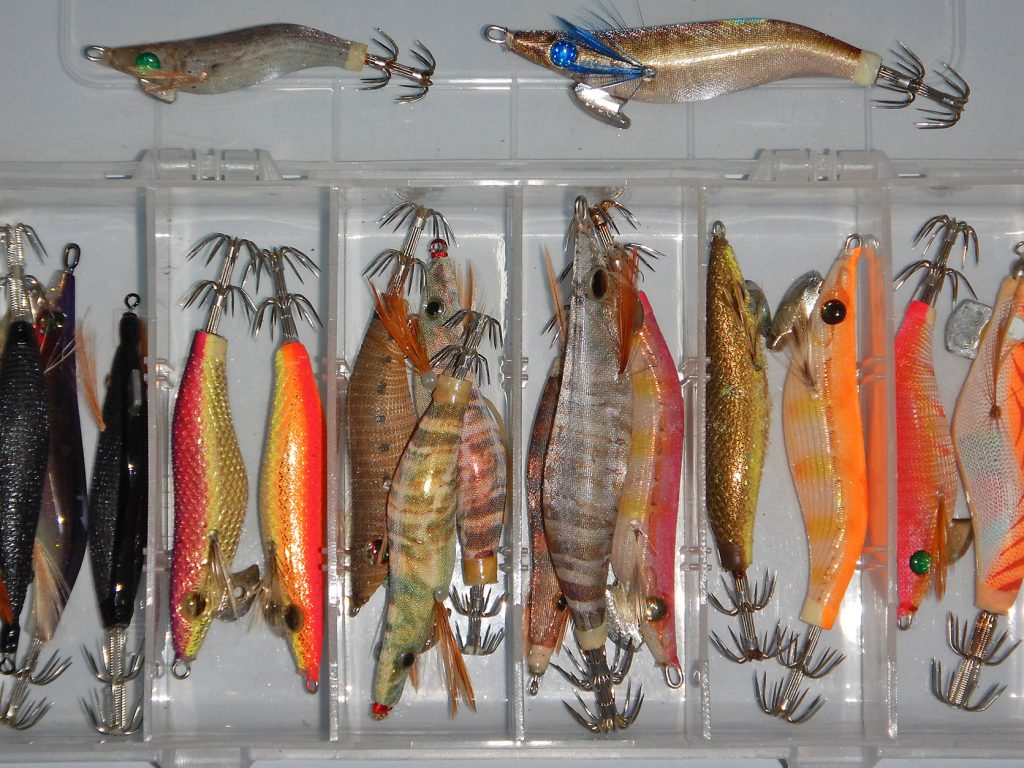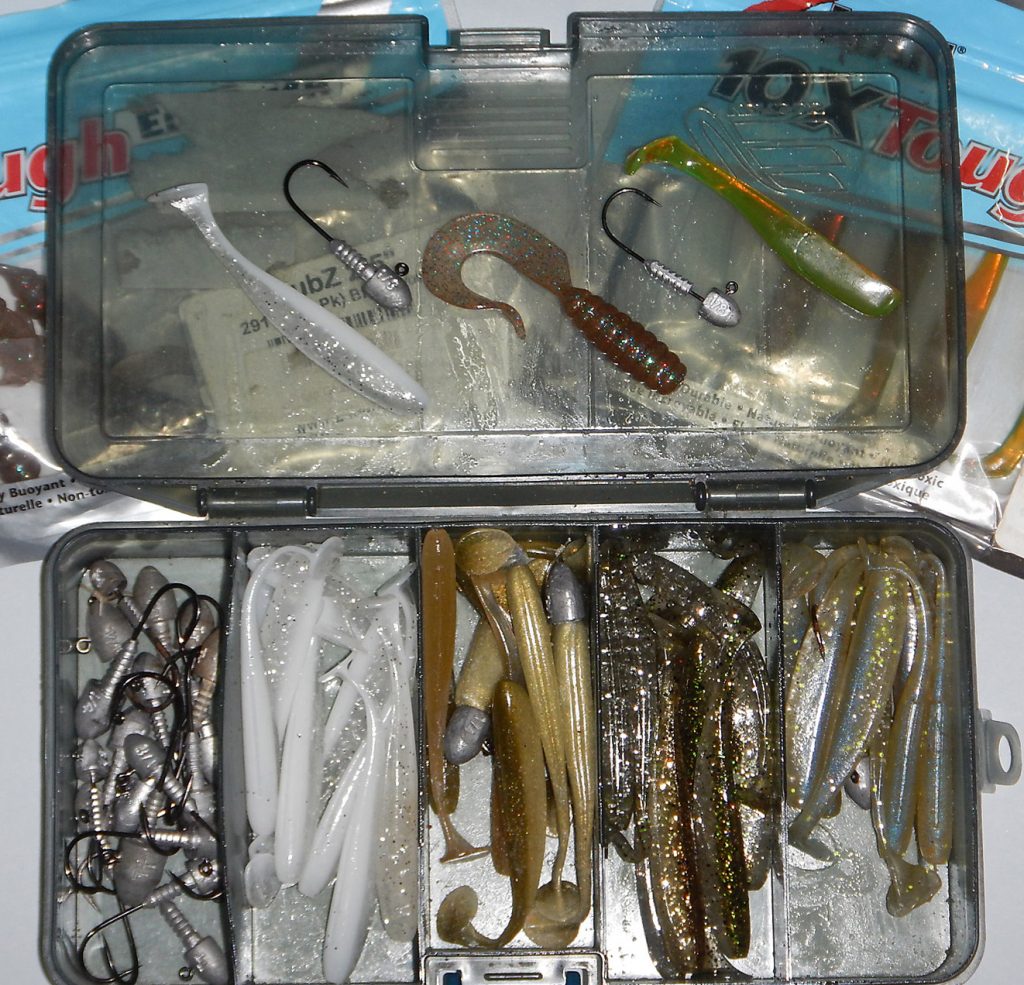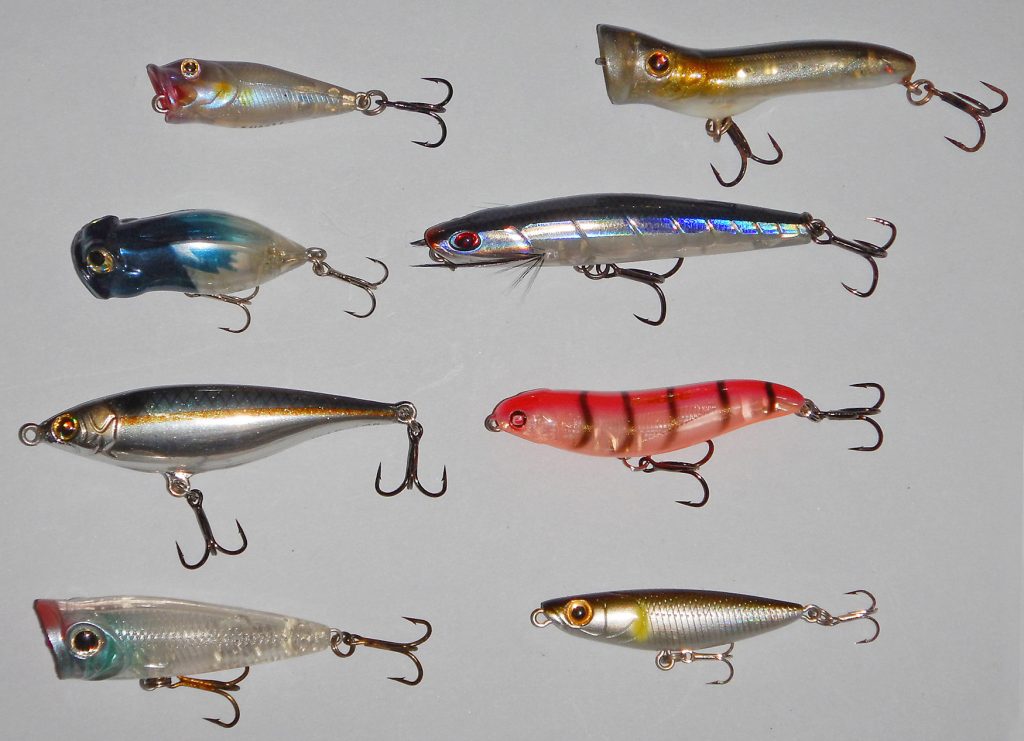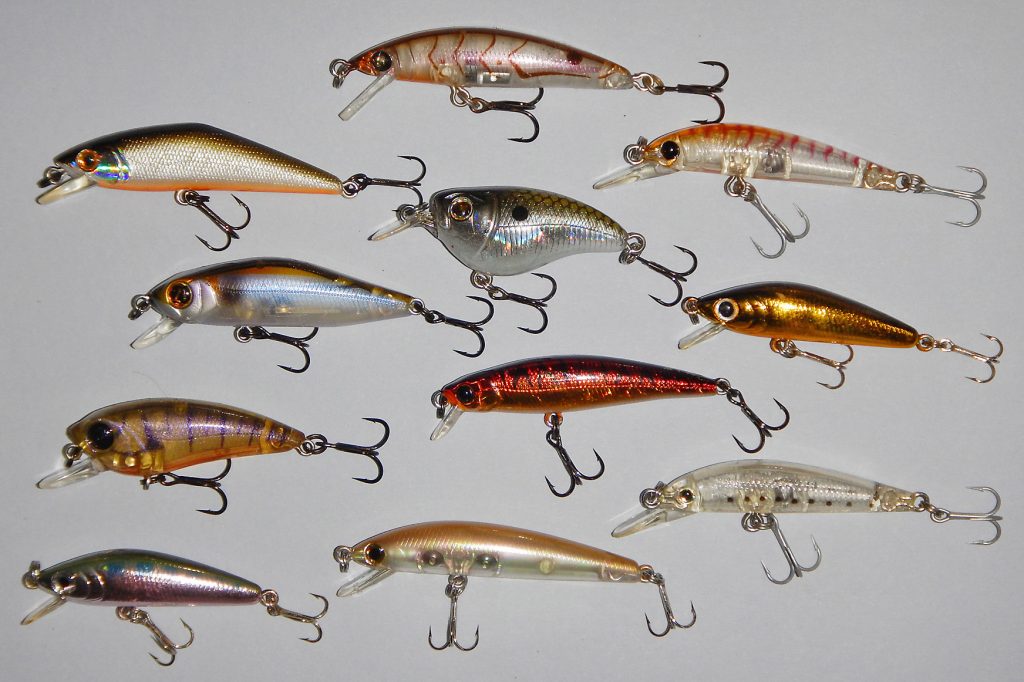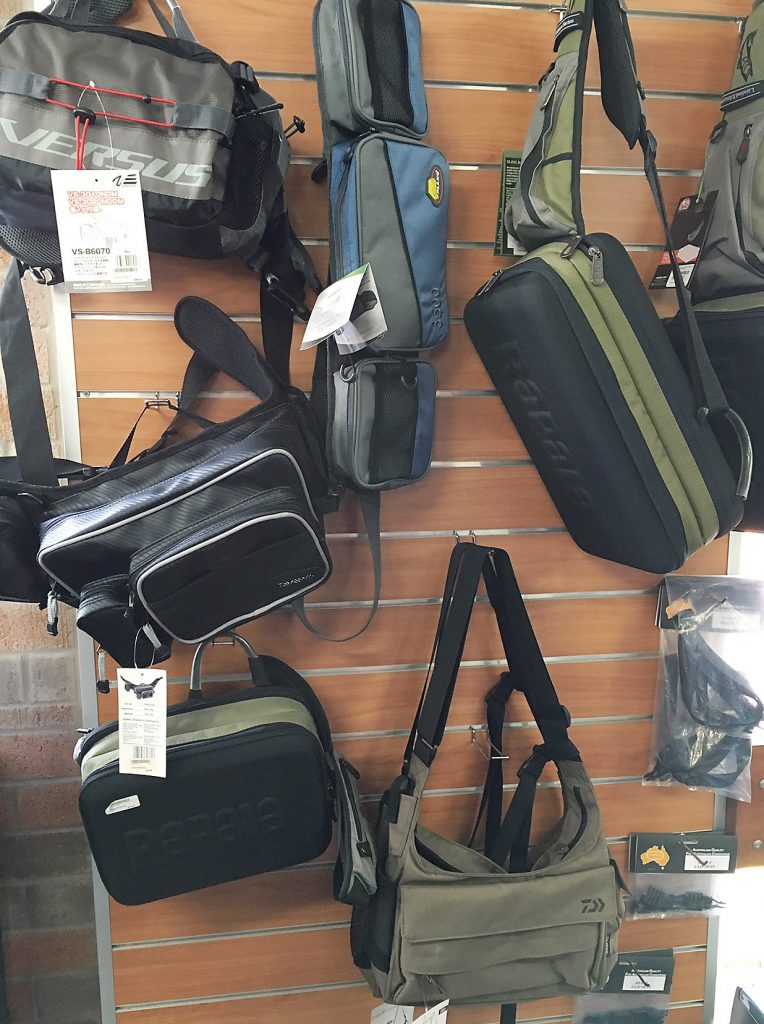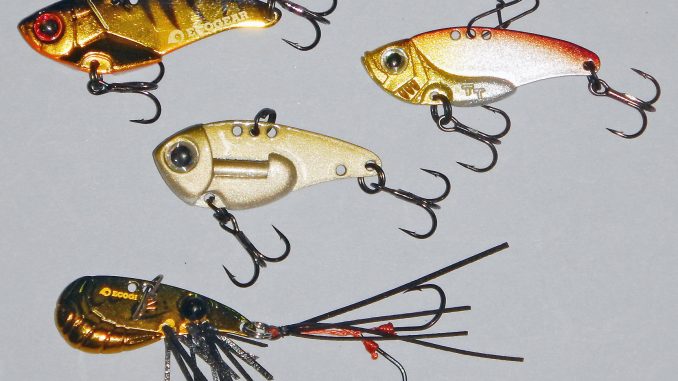
by Gordon MacDonald •
I often enjoy simple fishing like wading the flats and casting a few lures. I am lucky to live close to the bay, as the foreshores of Moreton Bay, the numerous canals, and a multitude of creek and river systems provide ample opportunity for anglers to target species such as bream, whiting, flathead, squid and a host of other species. The quality of fish that can be taken on little lures and jigs cast into shallow water is surprising. Being organised can make a big difference, as having everything with you, while remaining mobile is extremely important if you wish to explore a broad area of water, often 100m or more from shore.
At times you will wade in water up to waist deep to gain access to the shallow weed beds, rubble banks and sandy gutters where numerous species hunt and take up residence. Therefore you need to have everything at hand as you don’t want to be wading back to the shore every time you want to change lures or de-hook a fish. Let’s look at a few of the items that you may require if you are to make the most of land-based luring opportunities.
Gear
The small, light lures required for this type of fishing need a suitable outfit to cast them on. Rods in the 1-3kg, 2-4kg and 3-5kg line classes should be suitable. A graphite composition will guarantee your rod is physically light yet possesses the ability to cast small lures (generally 2.5-6g in weight), yet still possess the power to subdue a decent fish. While high quality outfits offer the best casting and fish fighting capabilities, you can still get good performance from a basic graphite rod and reel combination, and a suitable outfit can start from as little as $100. Add a spool of quality, light braided line for as little as $35 and your casting needs are met.
Transporting all your tackle can be a dilemma. Backpacks are not that suitable if you are wading as you have to take them off to access most items. Holding the backpack and retrieving gear while juggling a rod will often result in one or all items ending up in the water. Luckily there are many suitable tackle storage solutions available from quality tackle stores. Many of these are designed to be strapped around your waist. This is fine if you are only wading in the shallows, however, I prefer a bag that sits higher on my body, opting for a Rapala Sling Bag. This spends most of its time on my back out of the way, yet can be slung onto my chest to access various compartments. It opens 90° so you have a small tray on your chest, allowing your tackle box to sit flat to carry out various tasks.
There are a few items that you will need to have at hand for this style of fishing. A small pair of pliers are necessary to de-hook fish or straighten slightly distorted treble hooks. It is also useful to quickly remove a hook from yourself if you have a mishap. A pair of scissors is necessary for cutting leader material, trimming knots and similar tasks. A lip gripper device allows you to secure hard to handle species such as flathead. Mine is a basic plastic device, I like this type because it is light to carry and will not rust. Additionally, the wide, flat jaws don’t tear the mouth of a struggling fish and it easily clips onto the strap of my sling bag and is easily accessible.
You will require at least two types of leader material. Monofilament leader of 3-6kg for when you are surface fishing, as it floats and allows the lure to exhibit the desired action. Fluorocarbon leader is refuted to neither attract nor deflect light – therefore it is close to invisible underwater. Generally 3-6kg breaking strains are used to cast sub-surface lures such as soft plastics, minnow lures and vibration baits in the shallows.
While lures can be attached with a simple loop knot without hindering their decisive action, constant lure changes will quickly shorten your leader. This can be a little fiddly, especially when you are in waist deep water and trying to keep your reel out of the water, hold two lures, and retrieve scissors when you tie a knot. As such, I prefer to use a small snap. There are many different types available that will suffice, I like to use the Decoy Spiral Snaps as they are simple to use, with no clip to open, and are nice and light. Fast lure changes can be important to maximise your fishing opportunities.
Lures
Different locations require numerous lures to work them over effectively. Shallow areas require lures that dive to less than 1m. This is especially the case in areas with weed beds or shallow rock or reef that protrude from the bottom. These lures can be worked over the structure without fouling. I prefer floating lures as I generally find they have better actions at a slow retrieve speed. However, suspending models do have their advantages in the fact that they can be suspended over prominent structure (often a catalyst for a strike) and they are generally slightly heavier than floating lures, which aids in casting. Most of the shallow diving lures I commonly use are generally neutral or fairly natural finishes.
For those areas between 1-2.5m depth, use slightly deeper diving lures, especially when fishing the canals and edges of deeper channels. Species such as flathead, sole, estuary cod and flounder spend the majority of their time close to the bottom, therefore lures that track near the bottom, preferably banging and rattling across it, are most likely to score a strike. Floating lures can be walked across structure (ideal to chase estuary cod along the rock walls in the canals) and then paused and allowed to float up over obstructions, which limits snags and lost lures. Some of my deeper lures are bright colours, making them more prominent in the depths, especially in muddy or stained waters.
Blades and other vibration lures can be cast further in windy conditions. They sink to any depth and can be worked with a slow wind (roll) or a more erratic hop and pause retrieve. The vibrations these lures emit often draw predators from some distance away, as it is a similar vibe to a struggling baitfish.
Surface
Topwater offerings are a great addition to your lure arsenal. Popular lures include poppers and stickbaits, although fizzers, wakebaits and paddlers may also be included in this group. These are exciting to fish and provide a surface disturbance similar to a fleeing prawn or baitfish. The strikes can be exhilarating with a follow from a fish often witnessed for several seconds before the strike. I love working topwater offerings over weed beds and shallow reef and rubble. Dawn and dusk, as well as cloudy days, offer the prime time for these presentations, as predators are often higher in the water column and in shallower water during these periods. The surface disturbance of topwater lures will excite fish lurking nearby into predatory mode. To increase the hookup rate for surface lures, many anglers add a stinger hook such as the Ecogear ZX Spares or the Decoy DJ-54s. Large whiting can be tempted with a topwater lure worked constantly across the sand flats. Often they will strike repeatedly until they hook-up. Exciting stuff!
Soft plastics are extremely effective and moderately priced lures. When rigged on a weighted jighead, soft plastics can be worked across or close to the bottom. This makes them ideal presentations for flathead and other bottom lurking predators. Plastics can be worked in almost any depth of water, provided the appropriate jighead weight is chosen.
Small paddle-tails and curl-tails are especially productive as they can be slow rolled and require minimal effort to fish. However, prawn profiles, jerk shads and T-tails plus some worm and small crab profiles can also be used to good effect. For newbies, soft plastics offer an easy transition into the exciting world of lure fishing. If you fish the shallows keep your soft plastics small (maximum 3”), use the lightest jighead as you can get away with, and work them very slowly.
Squid Jigs
Although not a necessity, having a few squid jigs can find rewards with a feed of tasty cephalopods for the evening meal. The cooler months in particular, offer great squid fishing in the shallows of Moreton Bay. Squid often follow or attack conventional lures, but the hook-up rate is fairly poor. Having a couple of egi (squid jigs) will tempt any squid you come across during your fishing session. Usually jigs between 1.2-2.5 sizes will suffice. Have at least two or three at your disposal with a couple of neutral colours and perhaps one or two brighter colours. Small taps or a slight resistance on your lure during the retrieve might indicate a squid is attacking your lure. Tie on the egi and cast in the same generally direction and then slowly wind or work the egi in a series of small hops and pauses. When the strike comes, simply lift the rod tip into a fighting curve and slowly wind in the succulent squid.
Extra items
There are quite a few extra items that can be carried in your pack. While these are not necessities, they can useful. As light gauge, chemically sharpened treble hooks become dulled from hitting rocks or get bent and distorted while prying from a fish, they often need to be replaced. I keep an old school film canister with a selection of small trebles and some micro split rings. A pair of split ring tweezers is also required and I use a rubber band to secure this to the film canister.
A few other items I carry that come in handy are as follows. A couple of plastic bags if you decide to keep a fish or a squid or to collect and remove rubbish left by others. A folding fillet knife to process any fish caught before you head home. A tape measure (this one is a dressmakers tape measure which is cheap and easy to store) is handy to ascertain whether your catch is legal. Spare sunscreen for extended sessions. Scent to apply to your soft plastics – I do believe it can increase the strike rate. You may even decide to take a small camera with you, although many just use their phones to capture images these days.
Safety
Sun protection is extremely important to avoid short-term sunburn and long-term skin cancer. Apart from wearing an SPF rated long sleeve shirt, I also wear a high UV buff plus a cap/hat and apply plenty of sunscreen. Sunglasses are not only handy for reducing the glare on your eyes but you can see into the water effectively and recognise underwater structures and spot fish cruising the flats. There are a lot of underwater hazards to avoid when wading including stonefish, sharp rocks, broken shells and coral, glass, oysters and other flesh tearing obstacles. Wear a good pair of shoes that cover the entire foot and have a thick sole.
Once you gather all these items, you are ready for a serious assault on the shallows and flats around Moreton Bay. In most areas, I generally work the last hour of the run-in tide and the first few hours of the run-out, although this may be different depending on location. The more you go the better you will understand how that particular area of the ecosystem works. Sometimes I am able to hand catch a sand crab or two, although this would be easier with a small landing net. The shallow waterways lining Moreton Bay are an extremely healthy fishery, so get out and check them out.

